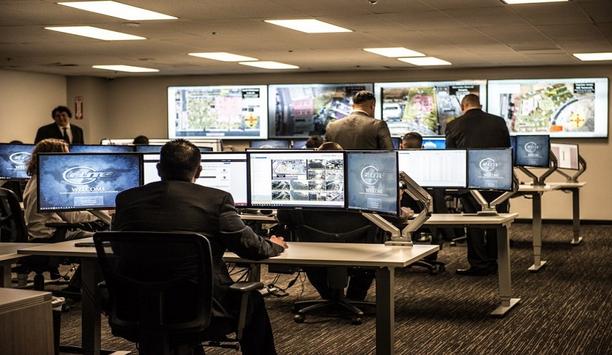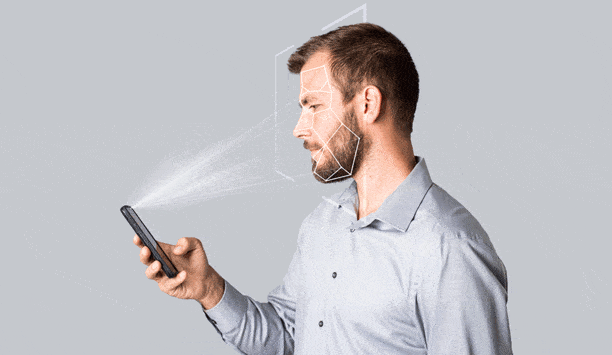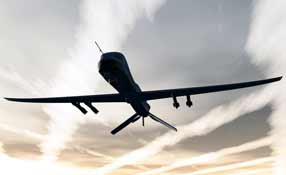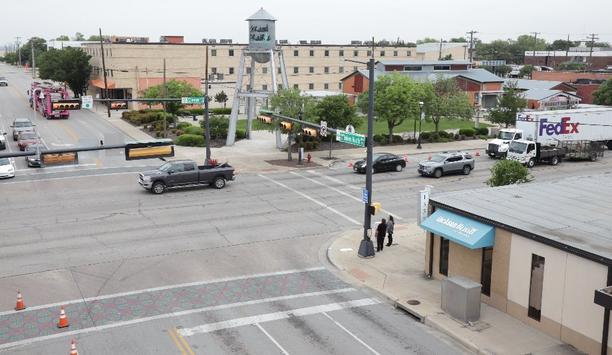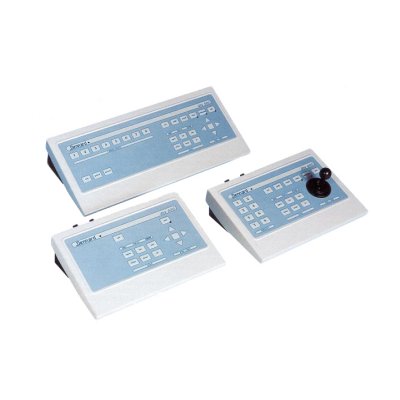Aviation security
The 8th edition of Inter Airport Southeast Asia (IASEA) was held in Singapore from 25-27 March 2025. Spanning across 6,259 sqm of exhibition space, the airport exhibition and conference brought together 3,621 industry trade professionals from 53 countries and regions, and featured 134 exhibiting companies, including pavilions representing Germany, Italy, Japan, and Singapore. The event saw a 43% increase in exhibitor size and a 15.6% rise in attendee numbers, underscoring the rising significanc...
As the world emerges from the pandemic's shadow five years after it spread globally, everything seems to be back on track. Air travel volumes have matched and even surpassed the pre-COVID level. But are they truly “back”? The pandemic did more than just bring masks and border closures. It fundamentally reshaped the world, accelerating digitalisation beyond recognition and irrevocably redefining security paradigms and human behaviour. Heightened security concerns Standard solutions...
As airports invest heavily in automation, biometrics, security, self-service and personalised commercial services, terminal layouts must evolve alongside these innovations. The traditional model involving rows of check-in counters, static security areas, and inefficient passenger flows no longer makes sense. Instead, airports need seamless integration, where smart technology and intelligent design work together to reduce congestion and make the most out of every square metre. Acquisition of CC...
RecFaces, an international facial recognition software vendor, is excited to announce an upcoming panel discussion on the transformative role of biometric technology in APAC airports. Titled “Smart Airports Start with Smart Tech: Facial Biometrics for APAC Airports,” the online event is to be held on April 30 at 15:00 IST and bring together top industry experts to discuss how AI-driven biometrics is reshaping air travel. Biometrics to streamline journey Industry polls reveal that...
The much-anticipated Inter Airport Southeast Asia (IASEA) 2025 has officially opened now at Marina Bay Sands, Singapore, bringing together key airport industry stakeholders, global solution providers, and pioneering experts to shape the future of airport operations and passenger experience. Themed “Airport Operations for Tomorrow,” conversations surrounding these topics are especially crucial as the aviation industry is witnessing rapid transformation and projected global passe...
AtlasIED, a pioneer in the AV and security industries, is returning to the Passenger Terminal Expo 2025, where it will exhibit in a shared booth with Nanolumens, Omnivex, and Sittig. AtlasIED will showcase its comprehensive transportation technology solutions at the show, including its renowned GLOBALCOM communications platform. Attendees are invited to experience these solutions in person at booth #9901. AtlasIED’s GLOBALCOM As a trusted communications provider in the transportation se...
News
Teledyne FLIR OEM, part of Teledyne Technologies Incorporated, announced Prism™ SKR, the newest addition to the Prism embedded software ecosystem. Prism SKR, pronounced “seeker,” sets a new standard in precision automatic target recognition (ATR) for autonomously guided weapon systems, including loitering munitions, air-launched effects (ALE), counter-unmanned aerial systems (C-UAS), low-cost missiles, and smart munitions. Prism SKR's advanced algorithms Prism SKR operates seamlessly at the edge on low-power embedded processors Prism SKR operates seamlessly at the edge on low-power embedded processors. Compatible with both infrared (IR) thermal and visible camera data, Prism SKR's advanced algorithms provide real-time target position, identification, direction of motion, and aim-point localisation. The target information is used to guide the platform's autonomous flight system for air-to-ground (A2G), ground-to-air, air-to-air, and ground-to-ground operations. Prism embedded software ecosystem “Compatible with existing autonomy and navigation software via a Weapon Open System Architecture (WOSA) compliant interface, Prism SKR represents a significant leap forward in autonomous precision target detection, identification, and tracking technology for defence OEM developers and integrators,” said Dan Walker, vice president of product management, Teledyne FLIR OEM. “Additionally, developers can reduce development risk and costs with plug-and-play integration with the Prism embedded software ecosystem and Teledyne FLIR IR camera modules.” Prism AIMMGen synthetic dataset Custom target lists can quickly be incorporated using the Prism AIMMGen synthetic dataset The Prism software ecosystem streamlines development and shortens time to market with out-of-the-box compatibility. Starting with the Prism AI embedded software, developers and integrators can utilise detection and tracking models leveraging Teledyne FLIR OEM's six million visible and thermal annotations. Custom target lists can quickly be incorporated using the Prism AIMMGen synthetic dataset and model training toolchain. Finally, Prism Supervisor empowers autonomous mission control and platform guidance with Prism SKR, where ATR is required. Ultimate solution for OEMs With its advanced features, robust ecosystem, and a complete application programming interface (API) and software development kit (SDK) for customisation and performance optimisation, Prism SKR is the ultimate solution for OEMs seeking to enhance the precision and reliability of autonomous weapon systems. Teledyne FLIR OEM will show Prism at SPIE Defense + Commercial Sensing in Orlando, Florida, April 13-17, 2025.
Defence Contractors are Now in Unchartered Territory. With new DCAA leadership, Executive Orders, and sweeping changes on the horizon, the stakes have never been higher. Protect the bottom line by joining key stakeholders from defence, aerospace, technology, and beyond at ACI’s 16th Annual DCAA & DCMA Cost, Pricing, Compliance, and Audits—the premier event for cost and pricing, government compliance, audit, and procurement professionals. Senior executives and forge new connections Network with senior executives and forge new connections that can endure well after the conference. This is a pivotal time to expand the sounding board as contractors navigate an uncertain path forward. The conference will feature perspectives from an esteemed government speaker faculty, including: Jennifer Desautel, Director, Defence Contractor Audit Agency John Tenaglia, Principal Director, Defence Pricing and Contract Office of the Secretary of Defence, U.S. Department of Defence Justin Carder, Chief Digital and AI Office, Defence Contractor Audit Agency Use promo code D10-999-SS25 at registration to save an additional 10%!
Allied Universal® today announced that Taylor Carr has joined its Technology Services business unit as senior vice president of operations. In this role, Carr will oversee operations and drive growth across all revenue segments of the business. Experienced industry leader Carr has more than 25 years of experience in the technology and security industriesCarr has more than 25 years of experience in the technology and security industries. Most recently he served as president for Vision Technologies, a national systems integrator specializing in security, audio-visual, wireless, networking, and structured cabling solutions. In his professional past, he held leadership and management positions at a wide range of national and global technology companies. Expertise driving excellence "We are pleased to welcome Taylor to Allied Universal’s Technology Services business unit," said Carey Boethel, president Allied Universal Technology Services. "With his extensive experience in technology and security, he brings a strong track record of leadership and operational excellence.” “His expertise will be instrumental in driving growth, enhancing service delivery and advancing our commitment to providing innovative security solutions to our clients." Industry affiliations Carr earned a bachelor’s degree in criminology and criminal justice from the University of Maryland and is a member of SIA (Security Industry Association) and ASIS International.
Gunnebo Entrance Control is set to unveil its latest advancements in airport security at Passenger Terminal Expo 2025, including showcasing advanced entrance control technology from Cominfo, a Gunnebo Entrance Control company. On booth 1314, as a pioneer in entrance control solutions, visitors will be able to see AFL as the latest addition to Gunnebo Entrance Control airport gates portfolio. Highest security standards Gunnebo Entrance Control will present Cominfo’s AirGate e-Gate for automated border control AFL is designed to streamline and secure airport boarding processes while maintaining a seamless passenger journey. This innovation ensures smooth passenger flow while upholding the highest security standards from check-in to boarding. Gunnebo Entrance Control will present Cominfo’s AirGate e-Gate for automated border control, which includes tailgating and crossover detection as well as identifying left luggage. Cominfo’s latest technology Nathan Anstee, VP of Mass Transit for Gunnebo Entrance Control, commented: "As airports continue to evolve, security must adapt to increasing passenger volumes while maintaining a seamless experience. By introducing AFL portfolio and Cominfo’s latest technology, we can showcase how our solutions are designed to meet these challenges, offering intelligent and automated solutions to improve throughput, enhance security and provide greater operational insight." "By leveraging advanced visual detection and space-efficient designs, we are helping airports create bespoke and safer, more efficient environments that align with the demands of modern travel." New standard in airport security solutions Visitors will see the AFL Ultra Compact, a sleek, space-efficient gate designed to seamlessly integrate into airport environments. This solution optimises space utilisation without compromising security, combining advanced technology with user-friendly features to enhance efficiency at every touchpoint. Its compact footprint and comprehensive security measures set a new standard in airport security solutions, balancing effectiveness with convenience. Level of security and operational efficiency Gunnebo Entrance Control will also showcase the AFL Compact with Overhead Detection Gunnebo Entrance Control will also showcase the AFL Compact with Overhead Detection, which builds on the features of the AFL Compact by incorporating an overhead camera. This addition enhances detection capabilities, including single-person verification, tailgating prevention, wrong-way detection, and obstruction alerts, ensuring a higher level of security and operational efficiency. Latest entrance control solutions Nathan concluded: "Passenger Terminal Expo 2025 is a perfect opportunity to engage with industry professionals and explore how we can support airports in enhancing security, improving passenger flow and optimising operations." "We look forward to sharing our latest entrance control solutions and discussing how they can be tailored to meet evolving global airport requirements." Passenger Terminal Expo 2025 Gunnebo Entrance Control invites attendees to visit booth 1314 at Passenger Terminal Expo 2025 to experience these evolving solutions firsthand and discuss tailored project opportunities to meet the specific security and operational needs of individual airport facilities. Passenger Terminal Expo will take place from April 8–10 at IFEMA in Madrid, Spain.
Themed “Airport Operations for Tomorrow”, inter airport Southeast Asia 2025 (IASEA) curated a lineup of conference sessions and the latest innovations to drive conversations on what a sustainable tomorrow looks like for Asia’s airport operations and ground handling industry. From 25-27 March 2025, the 8th edition of IASEA is expected to gather over 4,000 attendees, 150 notable global brands and some 50 industry experts as speakers at the iconic Marina Bay Sands, Singapore. IASEA 2025 Conference–Mastermind keynotes The session will discuss keys that improve operational efficiencies and lay the foundation for resilient Setting the stage for this conference on day 1 (25 March) is the fireside chat titled Reshaping Global Airport Operations by Patrick Ky, CEO, International Centre for Aviation Innovation (ICAI), an industry pioneer with nearly three decades worth of aviation experience. Moderated by Glory Wee, Senior Director, Aviation Development Group, Civil Aviation Authority Singapore (CAAS), the session will discuss solutions that improve operational efficiencies and lay the foundation for resilient and future-proof airports. Next-generation air navigation services “Globally, Asia Pacific takes the lead as the region with 60% of the total number of airport projects, and the region’s carriers handled 31 million international passengers, which was a 19.8% increase in November 2024 compared to November 2023. Recognising the need to address ground and airspace capacity constraints and manpower shortages, while keeping up with increasing passenger footfall in the region, the International Centre for Aviation Innovation was established in Singapore,” said Patrick Ky, CEO, International Centre for Aviation Innovation (ICAI). “ICAI focuses on research and development projects for next-generation air navigation services, automated and smart airports, and unmanned aviation systems and sustainable aviation. At the upcoming IASEA 2025, I’m excited to share insights into new innovations that will be tested in Singapore before being deployed globally.” Skytrax’s World Top Airport List 2024 Keynote sessions led by two of the top 5 airports according to Skytrax’s World Top Airport List 2024 This will be followed by keynote sessions led by two of the top 5 airports according to Skytrax’s World Top Airport List 2024. The first keynote, Airports of The Next Decade & Beyond with Shinichiro Motomiya, General Manager, Narita International Airport Corporation, will provide insights into the master plan of Narita International Airport – a case study of the airport of the future, and Airport in Brief: Incheon Airport with Soonil Hwang, Deputy Director of Fast Travel Team, Incheon International Airport Corporation, will cover a deep dive into the airport’s Digital Transformation Project. New Narita Airport expansion project Shinichiro Motomiya, General Manager, Narita International Airport Corporation, shared, “To ensure that airports can keep up with this surging demand in air traffic today, it’s become paramount for the industry to accelerate conversations on what will make airports sustainable, improve operational resilience and passenger experience. Take the ‘New Narita Airport’ expansion project as a case in point, which we will share about during the keynote session." "The airport development project for the 2030s is looking at consolidating terminals and building a new cargo area to allow for the expected increase of passenger capacity from 57 to 75 million and cargo capacity from 2.4 to 3.5 million tons at Narita International Airport.” Use of Artificial Intelligence technologies Soonil Hwang, Deputy Director of the Fast Travel Team, Incheon International Airport Corporation commented, “We should not shun away from the use of Artificial Intelligence technologies, especially in the aviation industry. At Incheon International Airport, we believe that technology will strike a fine balance between passenger experience and operational efficiency." "Hence, we’ve analysed customer demands and drawn a Persona Journey Map to design solutions around it. As we complete Phase 4 of the transformation of Incheon International Airport, it is my pleasure to share at the upcoming IASEA how we’ve identified values such as ‘Convenient Journey’ or ‘Time’ and utilised them to elevate the customer experience.” Challenges in ground management Minh will cover the solutions needed to address challenges in ground management The morning of the opening day will also see Nguyen Dang Minh, Head of Airport Operations Department, Airports Corporation of Vietnam (ACV) spearhead the next keynote, Vietnam Airport Development Masterplan 2030. Vietnam stands as a pioneer in the aviation landscape, aiming to expand its airport network to 30 airports by 2030 and a long-term vision extending to 2050 that includes upgrades to increase annual passenger capacity by over 80%. As new airports are being built and existing ones upgraded, Minh will cover the solutions needed to address challenges in ground management, security, and resource allocation that will enable airport operations to evolve alongside Vietnam’s expanding aviation network. How transformative technology, greener practices Day 2 of the conference will open with the keynote Global Action Plan for the Prevention of Runway Incursion. With safety as a top priority for the aviation industry, and runway incursions as one of the top five high-risk categories of aviation risks, the session will be led by Mitch Fox, Director, Asia Pacific Centre for Aviation Safety, Flight Safety Foundation, who will cover recommendations from the Global Action Plan for the Prevention of Runway Incursions (GAPRI) that go beyond simple regulatory compliance. Aside from safety, efficiency and sustainability are the next priorities to drive airports of tomorrow. Brad Moore, CEO, APAC, Swissport International AG, will lead the next keynote Redefining Ground Support Excellence in Asia Pacific to examine how transformative technology, greener practices, and strategic innovation are unlocking new opportunities for ground handling – a critical backbone of the aviation system. Aside from these mastermind keynotes, other industry experts and thought pioneers from the airport industry will join the conference, sharing their groundbreaking strategies for transforming terminal and ramp operations to address the challenges of today's demanding and rapidly changing aviation landscape. Some of the conference highlights Using Data Analytics to Optimise Airport Operations Rethinking Passenger Flow: Unravelling the Knot of Terminal Congestion Transforming Baggage Handling: Best Practices for Modern Airports Future-Proofing Airport Security: Balancing Safety, Technology & Passenger Experience Boosting Operational Resilience: Preparing for the Unexpected State-of-the-art solutions at inter airport Southeast Asia 2025 As the reference point for the future of airports, IASEA 2025 will stand as a platform to unveil the latest aviation technologies aimed at streamlining workflows, improving sustainability and elevating operational capabilities. Automation will continue to play a pivotal role in ever-growing passenger expectations. SITA’s 2024 Baggage IT Insights reveal that 80% of airports and 66% of airlines have put touchless self-service baggage handling in place, and more investments will continue in 2025. Award-winning airport management software Aligned with this change, industry expert Smith Detection will introduce to the Asia market the SDX 10060 XDi Aligned with this transformation, industry expert Smith Detection will introduce to the Asia market the SDX 10060 XDi, a ground-breaking X-ray scanner, offering highly accurate material discrimination and substance identification based on an object’s molecular structure. Separately, biometrics and digital identity pioneer NEC will showcase its facial recognition technology, ranked the world’s most accurate in a benchmark test conducted by the U.S. National Institute of Standards and Technology in 2024. ADB Safegate Singapore, who recently clinched awards for Environmental Initiatives, Innovation, Safety, and Business Expansion at the Airport Technology Excellence Awards 2024, will present their award-winning airport management software. Other notable brands to expect on the exhibition floor Aviaco GSE, CIAS, Colibri Energy, Cobus Industries, Datalogic, ewo, FAAC, Fastcharge, FibreFENCE by Fibre Net Spa, FLEX Industries, GRP Iluminacion, Honeywell, ITW GSE, Japan Radio Co., LEONARDO, Mallaghan, Mototok, NEC, OCEM Airfield, Oshkosh AeroTech, Poltrona Frau, Roypow Technology GmbH, SICK AG, ShinMaywa, Thales, TCR, TLD Asia, Toyota Industries Corporation, TREPEL and Weihai Guangtai. All registered professionals for inter airport Southeast Asia 2025 will be granted free access to the exhibition and conference floors. For the latest information on inter airport Southeast Asia, please visit the event website, LinkedIn, or Facebook pages.
Oliver Dörre, CEO of HENSOLDT AG, and Micael Johansson, President and CEO of Saab, signed a memorandum of understanding on intended cooperation in the field of aircraft protection technologies at the Munich Security Conference. Integrated system solutions ”Partnerships are a central element of our corporate strategy, especially in our commitment to deliver our products quickly and reliably to our customers. That's why this MoU with Saab is another important step in our strategic development." "This MoU with Saab is another important step in our strategic development. It is characterised by our positioning as a reliable partner for national and international security and defence programs and our holistic, cross-domain range of integrated system solutions,” said Oliver Dörre at the signing of the MoU. HENSOLDT new opportunities "This MoU reflects the intensification of the successful cooperation already established in various projects. We are very much looking forward to working with the Saab team to exploit the further potential for cutting-edge technologies in a targeted manner, thus contributing to the sustainable expansion of the capabilities of our military customers and partners, including opportunities for local value creation,” Dörre continued. “This agreement with HENSOLDT enables us to explore new opportunities and to leverage our combined expertise in aircraft protection technologies,” says Micael Johansson, Saab President and CEO. “Together, we will deliver innovative solutions that enhance the safety and effectiveness of our customers' missions.”


Expert commentary
The average business owner or investor has some kind of security precaution in place, especially in the after-hours when there are fewer deterrents to inhibit criminal activity. Security guards, video surveillance systems, motion sensor lights, or even just fake cameras placed around the property are some of the common options people choose. Future of overnight security Smart business owners are starting to realise, however, that some of these traditional security measures are becoming antiquated and no longer cutting. The now and future of overnight security is in remote guarding. Pioneered by companies like Los Angeles-based Elite Interactive Solutions, which was founded back in 2007, remote guarding is revolutionising the overnight security business. Minimising criminal activity Remote guarding is fast becoming the most popular choice among commercial end-user property owners Remote guarding utilises a combination of cutting-edge technology, “digital guards,” highly trained security agents, and local law enforcement if and when necessary to minimise the potential of criminal activity. For those adequately enlightened to its overwhelmingly impressive crime prevention capabilities, remote guarding is fast becoming the most popular choice among commercial end-user property owners to secure and protect their investments. What Is remote guarding? Remote guarding is a revolutionary concept and increasing trend in security systems that utilises a combination of methods to effectively analyse potential threats to property. Cameras and/or other monitoring devices running highly advanced algorithmic software are installed in strategic areas or vulnerable places onsite and remotely located security agents are immediately notified of any activity within a designated perimeter of the property. A blend of AI, cybersecurity, and video analytics When properly deployed by an expert provider, the technology stack includes a proprietary blend of video analytics, artificial intelligence, cybersecurity, and more. Done right, “noise” is effectively filtered out, allowing agents to act on legitimate alerts and achieve zero false alarms communicated to first responders. Today, there are a lot of terms and descriptions tossed around about remote guarding, remote video, virtual guarding, etc., but those attributes must be present to represent the true definition of the offering and its many virtues. Realtime situational awareness Many systems have a two-way speaker that allows the security agent to give a verbal warning When specially trained security agents are alerted to trespassers, possible intruders, or other suspicious activity, they analyse the situation in real-time and determine the necessary level of action. Many systems have a two-way speaker that allows the security agent to give a verbal warning, known as a voice-down, to the individual(s) that they are being watched. Most perpetrators, often believing the response is emanating directly from security personnel on the property itself rather than from a remote command centre, flee immediately. However, if the threat persists, the security agent enlists local law enforcement to get on the scene. Customised remote guarding When properly deployed, remote guarding systems are also customised to specific properties. A team of consultants visits the client’s property to evaluate its vulnerabilities and where to best place cameras and/or other monitoring devices for system efficacy. Traditional security shortfalls According to Keith Bushey, a retired commander for the Los Angeles Police Department, there is much frustration between law enforcement officers and potential victims of crime due to the historically unreliable performance of traditional burglar alarm systems and central monitoring stations. He states about 90% of security-related calls are false alarms, a problem that has been well-documented through the years. Onsite challenges When a legitimate emergency does occur, the perpetrators have often already done their damage When a legitimate emergency does occur, the perpetrators have often already done their damage and/or escaped by the time law enforcement arrives. Onsite security guards are not the remedy either as they bring their own set of issues and challenges. Unexpected costs Traditional security systems can also have unexpected costs. The cost is not only in the security guards’ paycheck or the cost of the equipment itself. The cost comes when an actual incident occurs. In worst-case scenarios, the security guard(s) are injured, the business suffers inventory loss, and/or damage is sustained to the property. The medical and other costs for the security guard(s), the loss of inventory, property damage, deployment of law enforcement resources, and possible fallout of legal expenses all add up. Even in the best-case scenario, false alarm expenses incur if law enforcement is dispatched. These, among many others, are some of the primary issues that remote guarding resoundingly answers as a superior alternative. A bounty of benefits Remote guarding systems have been proven to cut costs and be more effective than traditional security systems. Even though the monthly monitoring costs of remote guarding are significantly higher than traditional intrusion detection system monitoring, the much higher effectiveness in crime reduction, elimination of false alarms, and augmenting or replacement of manned guards result in a substantially higher return on investment (ROI) to the end user. Easy tracking of threats The security cameras already have their image captured on record, making them easier to track down For example, case studies have demonstrated reduced security costs for clients by 60%, on average. These reductions have come from the costs of security staff, inventory, or property loss, plus saving money on insurance premiums and deductibles. The nature of remote guarding reduces the risk and costs of false alarms, with professional security agents able to determine an actual threat before law enforcement is called. In a rare instance when a perpetrator escapes before law enforcement arrives or can detain the individual(s), the security cameras already have their image captured on record, making them easier to track down and identify. Reduction of false alarms The significant reduction in false alarms is greatly appreciated by law enforcement, as it allows them to focus on real emergencies or crises. Better relationships are also developed between clients and law enforcement, as remote guarding systems are highly reliable in providing accurate and real-time information to officers as they approach the scene. In short, it assists law enforcement in doing their job more effectively, as well as more safely thanks to having eyewitness information before engaging in an active crime scene. Partnership When you combine the decreased cost with the increased efficiency and success rate, it is easy to see why many commercial end-user property owners across the country are making the shift to remote guarding. It’s also an outstanding opportunity for professional security dealers and integrators to partner with a remote guarding services provider to bring a superior solution to their end customers and pick up a recurring monthly revenue stream in the process.
It’s no secret that the data security sector is constantly changing. It has an annual CGR of about 12.3%. Future trends in data security Much of this has to do with the rise of cybercrime in recent years, with reports showing that cyberattacks happen as often as every 39 seconds. To combat the growing rate of cybercrime, data security has been on the rise. As we journey further into this era, it becomes evident that a spectrum of significant trends is molding the future of data security. This exploration delves into a selection of these trends, unraveling their importance and the potential implications they carry 1. AI security tools will increase Artificial Intelligence is also being used in the development of smart attacks and malware The introduction of Artificial Intelligence in the data security industry brought significant changes, especially in cybersecurity. AI has been the golden standard for face detection, natural language processing, automated threat detection, and automated security systems. Additionally, Artificial Intelligence is also being used in the development of smart attacks and malware, bypassing even the latest security protocols in data control. And as time progresses, AI security tools will flourish and dominate the scene. Let’s take a more in-depth look at three of the top AI security tools. Targeted attack analysis tool Manufacturers utilise targeted attack analysis tools to uncover targeted and stealthy attacks. Artificial Intelligence can be applied to the program’s capabilities, processes, and knowledge. For instance, Symantec launched this tool to combat the Dragon 2.0 attack in 2022. The phishing attack reprimanded multiple energy companies while trying to gain access to their operational networks. Targeted Attack Analysis Tools can analyse incidents and look for similarities from previous situations. They also help detect suspicious activities and collect all the necessary data to determine whether a specific action is malicious. Intercept X tool Results from the Intercept X Tool feature high accuracy and a low false positive rate Sophos, a British security hardware and software company, launched the Intercept X Tool. It engages a neural network that records and analyses data like a human brain. Sophos’ Intercept X Tool can extract features from a single file and perform a deep analysis. It detects malicious activities within 20 milliseconds. Plus, it’s also trained to work on bi-directional sharing and real-world feedback of threat intelligence. Results from the Intercept X Tool feature high accuracy and a low false positive rate. IBM Watson Technology IBM’s QRadar Advisor uses IBM Watson Technology, a unique AI tool for fighting cyber attacks. Artificial Intelligence can auto-investigate activities and indicators for potential exploitation or compromise. With cognitive reasoning, IBM Watson Technology can present critical insights to accelerate the response cycle. Security analysts can utilise this technology to search for threat incidents, reducing the risk of letting them fly under the radar. 2. Blockchain as a security solution It guarantees no points of failure or hackable entrances that can expose datasets inside the system Blockchain is a type of distributed ledger technology (DLT) that aims to establish trust within an untrusting ecosystem. Today it’s one of the most robust cybersecurity technologies in the industry. Blockchain utilises a decentralised ledger system, but your team members can still gain access to transparent information in the cloud. Members can also record, pass along, and view necessary transactional data in the blockchain. The entire blockchain process maintains data integrity within the system while establishing trust among team members. It guarantees no points of failure or hackable entrances that can expose datasets inside the system. Cybersecurity, biometrics Cybersecurity primarily benefits from these features because blockchain can create a secure and robust wall between data and hackers. On top of that, blockchain ledgers can include biometrics like fingerprints and retina scans. These prevent hackers from accessing any private data. Because blockchain is decentralised, it also limits hackable data. Together with the technology’s record-keeping system, each node is provided insight into data manipulation exposing real-time cybercrime attempts. 3. Increased and widened access control Without access control, expect your company to be open to security issues, including theft, data loss, and breach of data Access control is critical in data security. More than a valuable security tool, business leaders can use access control to regulate people accessing any given resource. A company with an IT security setting can control who has the liberty to edit certain files. One of the primary goals of access control is to minimise threats or attacks to organisations and businesses to keep people and data secure. Without access control, expect your company to be open to security issues, including theft, data loss, and breach of data protection laws. Benefits The benefits of increased and widened access control include: Identifying who can access and control your data at specific time intervals. Protecting data from overwriting, accidental deletion, and malicious intent. User permissions that can be readily changed. Compliance and regulation with data privacy laws. Central management of access to data through a reporting portal or a dashboard. Multi-factor authentication Access control comes in various types and systems, so it’s critical to know the features of what you’re looking for. The most common type is multi-factor authentication or MFA. It involves multiple steps before logging in, requiring the user to enter other relevant information besides the password. Some other examples of information include biometrics, answering a security question, or entering a code sent to the user’s email address. Two-factor authentication, role-based access control Two-factor authentication further prevents unauthorised entries that can result in unnecessary data possession Two-factor authentication further prevents unauthorised entries that can result in unnecessary data possession. Another type of access control is role-based access control. In this setup, only one individual can set up access guidelines and grant permissions to specific team members within an organisation. 4. Greater use of the zero-trust security model The zero-trust security model is a framework that requires every user within and outside the organisation to undergo authentication, authorisation, and validation. These are all essential to ensure proper security configuration before access is granted to the company’s applications and data. A zero-trust model assumes that anyone can cause data breaches and that a traditional network edge is not taken into effect. Moreover, it addresses the following modern-day challenges: Hybrid cloud environments. Security of remote workers. Ransomware threats. This framework utilises the combination of multiple advanced technologies, including: A risk-based multi-factor authentication. Endpoint security. Identity protection. Cloud workload technology. The zero-trust model uses all these innovative tools for system identification, user verification, access consideration, and system security maintenance. Constant validation and monitoring Enforcing strict policies and compliance with data privacy laws are also essential Additionally, it also considers data encryption, email security, and asset verification before establishing connections with applications. The architecture of a zero-trust framework requires constant validation and monitoring of the users and the devices they are using. Enforcing strict policies and compliance with data privacy laws are also essential. More importantly, the zero trust architecture requires all organisations to be aware of all their available services and accounts to gain complete control of data handling and manipulation. 5. Increased privacy regulations Privacy regulations and policies guide organisations in proper data control, handling, and security. These policies guide organisations in proper data control, handling, and security. As a responsible business owner, you must comply with these regulations to avoid legal issues. With cybersecurity attacks becoming common, expect increased and stricter privacy regulations to be released in the next few years. While current policies are still taken into effect, various modifications and adjustments will occur to compete with the rising numbers of data breaches, thefts, data loss, and more. California Privacy Rights Act (CPRA) Currently, the California Privacy Rights Act (CPRA) is the most comprehensive legislation on state data privacy. It only started to take effect on January 1, 2023. The CPRA introduces the following principles: Broad individual consumer rights. Significant duties of people who need to collect sensitive and personal information. Additional definitions of data privacy and security. An individual’s duties include releasing information about data collection to concerned data subjects and proper access, correction, and deletion of information. Final thoughts 2023 is a big year for data security. Trends such as increased adoption of zero-trust policies, a greater reliance on AI security tools, and the implementation of blockchain as a security solution are all things we expect to see shortly. Staying up-to-date with these trends is important for keeping your business current and ensuring that you’re adhering to new and changing regulations. Doing so can give you an edge over the competition and keep you out of legal hot water.
Global transportation networks are becoming increasingly interconnected, with digital systems playing a crucial role in ensuring the smooth operation of ports and supply chains. However, this reliance on technology can also create vulnerabilities, as demonstrated by the recent ransomware attack on Nagoya Port. As Japan's busiest shipping hub, the port's operations were brought to a standstill for two days, highlighting the potential for significant disruption to national economies and supply chains. Transportation sector The attack began with the port's legacy computer system, which handles shipping containers, being knocked offline. This forced the port to halt the handling of shipping containers that arrived at the terminal, effectively disrupting the flow of goods. The incident was a stark reminder of the risks associated with the convergence of information technology (IT) and operational technology (OT) in ports and other critical infrastructures. This is not an isolated incident, but part of a broader trend of escalating cyber threats targeting critical infrastructure. The transportation sector must respond by bolstering its defences, enhancing its cyber resilience, and proactively countering these threats. The safety and efficiency of our transportation infrastructure, and by extension our global economy, depend on it. Rising threat to port security and supply chains XIoT, from sensors on shipping containers to automatic cranes, are vital to trendy port functions OT, once isolated from networked systems, is now increasingly interconnected. This integration has expanded the attack surface for threat actors. A single breach in a port's OT systems can cause significant disruption, halting the movement of containers and impacting the flow of goods. This is not a hypothetical scenario, but a reality that has been demonstrated in recent cyberattacks on major ports. Adding another layer of complexity is the extended Internet of Things (XIoT), an umbrella term for all cyber-physical systems. XIoT devices, from sensors on shipping containers to automated cranes, are now integral to modern port operations. These devices are delivering safer, more efficient automated vehicles, facilitating geo-fencing for improved logistics, and providing vehicle health data for predictive maintenance. XIoT ecosystem However, the XIoT ecosystem also presents new cybersecurity risks. Each connected device is a potential entry point for cybercriminals, and the interconnected nature of these devices means that an attack on one, which can move laterally and can have a ripple effect throughout the system. The threat landscape is evolving, with cybercriminals becoming more sophisticated and their attacks more damaging with a business continuity focus. The growing interconnectivity between OT and XIoT in port operations and supply chains is also presenting these threat actors with a greater attack surface. Many older OT systems were never designed to be connected in this way and are unlikely to be equipped to deal with modern cyber threats. Furthermore, the increasing digitisation of ports and supply chains has led to a surge in the volume of data being generated and processed. This data, if not properly secured, can be a goldmine for cybercriminals. The potential for data breaches adds another dimension to the cybersecurity challenges facing the transportation sector. Role of cyber resilience in protecting service availability Cyber resilience refers to organisation's ability to prepare for, respond to, and recover from threats As the threats to port security and supply chains become increasingly complex, the concept of cyber resilience takes on a new level of importance. Cyber resilience refers to an organisation's ability to prepare for, respond to, and recover from cyber threats. It goes beyond traditional cybersecurity measures, focusing not just on preventing attacks, but also on minimising the impact of attacks that do occur and ensuring a quick recovery. In the context of port operations and supply chains, cyber resilience is crucial. The interconnected nature of these systems means that a cyberattack can have far-reaching effects, disrupting operations not just at the targeted port, but also at other ports and throughout the supply chain. A resilient system is one that can withstand such an attack and quickly restore normal operations. Port operations and supply chains The growing reliance on OT and the XIoT in port operations and supply chains presents unique challenges for cyber resilience. OT systems control physical processes and are often critical to safety and service availability. A breach in an OT system can have immediate and potentially catastrophic physical consequences. Similarly, XIoT devices are often embedded in critical infrastructure and can be difficult to patch or update, making them vulnerable to attacks. Building cyber resilience in these systems requires a multi-faceted approach. It involves implementing robust security measures, such as strong access controls and network segmentation, to prevent attacks. It also involves continuous monitoring and detection to identify and respond to threats as they occur. But perhaps most importantly, it involves planning and preparation for the inevitable breaches that will occur, ensuring that when they do, the impact is minimised, and normal operations can be quickly restored. Building resilience across port security and supply chains In the face of cyber threats, the transport sector must adopt a complete method of cybersecurity In the face of escalating cyber threats, the transportation sector must adopt a comprehensive approach to cybersecurity. This involves not just implementing robust security measures, but also fostering a culture of cybersecurity awareness and compliance throughout the organisation. A key component of a comprehensive cybersecurity strategy is strong access controls. This involves ensuring that only authorised individuals have access to sensitive data and systems. It also involves implementing multi-factor authentication and regularly reviewing and updating access permissions. Strong access controls can prevent unauthorised access to systems and data, reducing the risk of both internal and external threats. Network segmentation Network segmentation is another crucial measure. By dividing a network into separate segments, organisations can limit the spread of a cyberattack within their network. This can prevent an attack on one part of the network from affecting the entire system. Network segmentation also makes it easier to monitor and control the flow of data within the network, further enhancing security. Regular vulnerability assessments and patch management are also essential. Vulnerability assessments involve identifying and evaluating potential security weaknesses in the system, while patch management involves regularly updating and patching software to fix these vulnerabilities. These measures can help organisations stay ahead of cybercriminals and reduce the risk of exploitation. EU’s NIS2 Directive EU’s NIS2 Directive came into effect, and member states have until October 2024 to put it into law The transportation sector must also be prepared for greater legislative responsibility in the near future. The EU’s NIS2 Directive recently came into effect, and member states have until October 2024 to put it into law. The Directive aims to increase the overall level of cyber preparedness by mandating capabilities such as Computer Security Incident Response Teams (CSIRTs). Transport is among the sectors labelled as essential by the bill, meaning it will face a high level of scrutiny. Getting to grips with the complexities of XIoT and OT integration will be essential for organisations to achieve compliance and avoid fines. Global transportation infrastructure Finally, organisations must prepare for the inevitable breaches that will occur. This involves developing an incident response plan that outlines the steps to be taken in the event of a breach. It also involves regularly testing and updating this plan to ensure its effectiveness. A well-prepared organisation can respond quickly and effectively to a breach, minimising its impact and ensuring a quick recovery. In conclusion, mastering transportation cybersecurity requires a comprehensive, proactive approach. It involves implementing robust technical measures, fostering a culture of cybersecurity awareness, and preparing for the inevitable breaches that will occur. By taking these steps, organisations can enhance their cyber resilience, protect their critical operations, and ensure the security of our global transportation infrastructure.
Security beat
Travel volumes at airports have been increasing of late, although still below the 2.5 million or so passengers the Transportation Security Administration (TSA) screened every day, on average, before the pandemic. As passengers return, they will notice the airport security experience has changed during the pandemic – and many of the changes are likely to continue even longer. Need for touchless technology The lowest U.S. air travel volume in history was recorded last April, with approximately 87,500 passengers. As passenger traffic plummeted, the aviation community sought to explore the potential of new technologies to make security checkpoints more contactless and flexible when the traffic numbers return. The pandemic has seen an increase in touchless technology deployed in the screening area. Used for cabin baggage screening, Computed Tomography (CT) produces high-quality, 3-D images to enable a more thorough analysis of a bag’s contents. Imaging Technology Millimeter-wave body scanners began replacing metal detectors globally as a primary screening method Enhanced Advanced Imaging Technology (eAIT), which uses non-ionising radio-frequency energy in the millimeter spectrum, safely screens passengers without physical contact for threats such as weapons and explosives, which may be hidden under a passenger’s clothing. Millimeter-wave body scanners began replacing metal detectors globally as a primary screening method. AI algorithms Other innovations include an automatic screening lane, centralised image processing, and artificial intelligence (AI). Looking ahead, AI algorithms have the ability to clear most passengers and bags automatically, making the process smoother and freeing up staff to focus only on alarms. The pandemic’s need for contactless screening may accelerate the adoption of AI. CAT machine Credential Authentication Technology (CAT) machines automatically verify identification documents presented by passengers during the screening process. The TSA continues to accept expired Driver’s Licenses and state-issued IDs for up to a year after expiration, based on the premise that license renewals may be delayed and/or more difficult during the pandemic. The REAL ID enforcement deadline was extended to Oct. 1, 2021. Health precautions Checkpoint health precautions have been a part of the airport screening experience since early in the pandemic. Last summer, the TSA announced the “Stay Healthy. Stay Secure” campaign, which included requirements such as social distancing among travelers, ID verification without physical contact, plastic shielding installed at various locations, and increased cleaning and disinfecting. In January 2021, President Biden signed an Executive Order requiring travellers to wear face masks when in airports and other transportation facilities (to remain in effect until May 11). Checkpoint screening Clear is a privately owned company that provides expedited security that uses biometrics either a person’s eyes or face to speed along the process of getting people through checkpoints. TSA officers wear masks and gloves at checkpoints and may also wear eye protection or clear plastic face shields. The limits on allowable liquids a passenger may take on board were broadened to include a hand sanitiser container of up to 12 ounces, one per passenger in a carry-on bag. A paradigm shift Just as aviation security changed after 9/11, the COVID-19 crisis is expected to lead to a paradigm shift to create a safer and more secure environment. Measures were implemented so that passengers, staff and other stakeholders could have continued assurance and confidence in airports amid and after the pandemic.
Facial recognition continues to be a political football and a target of privacy activists in the United States. For example, San Diego has suspended its use of facial recognition scanners by law enforcement after a campaign by civil rights groups. The San Diego Tactical Identification System (TACIDS) programme included a database of facial recognition scans shared by 30 local, state and federal agencies. A California law, passed in the fall, puts a three-year moratorium on law enforcement use of face recognition technology. A proposal in Congress would prohibit use of biometric recognition technology in most public and assisted housing units funded by the Department of Housing and Urban Development (HUD), thus protecting the more than two million public housing residents nationwide from being “over-surveilled.” The “No Biometric Barriers to Housing Act” is supported by the NAACP, the National Housing Law Project, National Low-Income Housing Coalition, National Action Network, Color of Change, and the Project on Government Oversight. The problems of Facial Recognition "Studies that show that facial recognition systems may misidentify many individuals including women and people of colour" A letter from seven members of Congress to HUD Secretary Ben Carson questioned the use of facial recognition in federally assisted housing because it “could be used to enable invasive, unnecessary and harmful government surveillance of…residents.” The letter cites studies that show that facial recognition systems may misidentify many individuals including women and people of colour, thus “exacerbating vulnerabilities that marginalized groups already face in life.” In June, Somerville, Mass., became the second U.S. city to ban the use of facial recognition technology in public spaces. The first was San Francisco. A coalition of organisations and trade associations has issued a letter to Congress outlining concerns with “blanket prohibitions” or moratoriums on facial recognition technology and listing beneficial uses for public safety, national security and fighting fraud. The Security Industry Association (SIA) is part of the coalition, the Information Technology and Innovation Foundation. A letter from seven members of Congress to HUD Secretary Ben Carson questioned the use of facial recognition in federally assisted housing Facial recognition technology has benefited Americans in many ways, such as helping to thwart identity thieves" The letter says: “While polls consistently show that Americans trust law enforcement to use facial recognition technology responsibly, some groups have called for lawmakers to enact bans on [the] technology. While we agree that it is important to have effective oversight and accountability of these tools to uphold and protect civil liberties, we disagree that a ban is the best option.” Development and guidance As alternatives to outright bans, the letter proposes expanded testing and performance standards, develop of best practices and guidance for law enforcement, and additional training for different uses of the technology. “Facial recognition technology has benefited Americans in many ways, such as helping to fight human trafficking, thwart identity thieves and improve passenger facilitation at airports and enhance aviation security,” says Don Erickson, CEO of SIA. “SIA believes this advanced technology should be used in a safe, accurate and effective way, and look forward to working with Congress to help the U.S. set the example on how to ethically and responsibly govern this technology.” SIA has produced a document called “Face Facts: Dispelling Common Myths Associated with Facial Recognition Technology.”
Could drones be used for civilian/commercial surveillance within five years? Drone strikes in war zones are reported routinely now in the news, but unmanned aerial vehicles (UAVs) or drones are still not common in commercial and civilian applications. Commercial uses may still be several years away, but is it too soon to start thinking about the possible security applications? Currently in the United States, Congress has directed the Federal Aviation Administration to come up with a plan by September 2015 to “integrate” unmanned aircraft safely into U.S. airspace. After that, presumably, the FAA will grant licenses to fly the vehicles for various civilian and commercial uses. The agency projects that five years after it issues regulations for drones weighing 55 pounds or less, there will be 7,500 such devices in the air. Meanwhile, technology advances are making the process of flying the drones both more precise and more automated. By the time drones are widely used in the commercial world, it will be a mature technology that has performed many years in military applications. The effective wartime use of drones has encouraged greater consideration of how the devices can be used in commercial applications such as security. Enhancing video surveillance for large perimeters The most obvious security application is the ability to add new bird’s-eye views to video surveillance systems. Drones programmed to “patrol” a perimeter could expand current capabilities of security to provide an early warning, or could even be programmed to follow a target as it approaches a protected facility. Drones could be used to view very large areas, such as along petroleum pipelines which may now be unprotected. Use of a variety of sensors and other electronic components makes the potential benefits of drones for security applications almost limitless. Even as the U.S. regulatory issues are being settled, it is likely commercial uses will continue to be developed in other places in the world, ready to deploy domestically as soon as they are allowed. Other civilian applications include policing and firefighting or other work that is dangerous or unpleasant. How might the interaction of such uses with existing security systems promote greater protection and faster emergency response? How should the security industry be preparing for civilian uses of drones? (For that matter, what new vulnerabilities and threats does the technology represent and how should the industry prepare?) Drones are already being used for surveillance at the U.S.-Mexican border, and the Washington Post reported earlier this year that various federal, state and local law enforcement agencies often borrow the drones for missions such as disaster relief and searching for marijuana crops. We have all watched how fast technology can change our market. It may not be too soon to be thinking about how drones could become a valuable new tool for the security market. Five years isn’t very long.
Case studies
RGB Spectrum®, a pioneering designer and manufacturer of real-time audio-visual solutions for defence and public safety, announces that Trident Military Systems, LLC, a pioneering provider of flight simulation systems for military organisations, has teamed up with RGB Spectrum to enhance the effectiveness of its F-16 training programs. With a focus on delivering realistic, synchronised training experiences, Trident has successfully integrated RGB Spectrum’s SuperView®, DGy™, and QuadView® solutions, transforming how pilots and instructors engage with their training data. The Challenge Trident Military Systems supports the Air National Guard and Air Force Reserve by building and maintaining F-16 simulators across multiple sites nationwide. Trident aimed to provide instructors with real-time cockpit data, synchronised video sources, and effective debriefing capabilities for improving pilot training. Why RGB Spectrum? RGB Spectrum’s technology proved vital in delivering high-quality training to the Air National Guard Trident turned to RGB Spectrum for its flexible, reliable, and scalable solutions. These products allowed Trident to seamlessly integrate custom applications, synchronise video with network data, and ensure fail-safe operations under critical conditions. RGB Spectrum’s technology proved essential in delivering high-quality training to the Air National Guard and Air Force Reserve. “We needed a solution that could integrate cockpit data with real-time network information and ensure that our training systems performed flawlessly under the high-stakes conditions of military training,” said Jerry Giacinto, Chief Technology Officer at Trident Military Systems. “RGB Spectrum’s products have provided the reliability and flexibility we need to offer exceptional training experiences.” How RGB Spectrum’s technology powers training? Trident Military Systems utilises the following RGB Spectrum products to support training and debriefing: SuperView Multiviewer: Displays a real-time "glass cockpit" on a large monitor, giving instructors a comprehensive view of cockpit data, including multi-function displays (MFD), flight data, and simulated out-of-cockpit visuals. DGy Video Codecs: Records video and audio during training sessions using JPEG2000 compression, providing visually lossless video for accurate post-mission analysis and debriefing. QuadView Multiviewer: Integrates multiple video sources on a single screen, enabling instructors to present critical training data in customisable layouts for enhanced clarity and context. The Results The integration of RGB Spectrum’s technology has had a profound impact on Trident Military Systems’ ability to deliver high-quality, synchronised training: Enhanced Training Capabilities: Instructors gain real-time access to all cockpit data, improving the depth and quality of feedback during training. Improved Debriefing: DGy’s video and audio recording features have streamlined post-mission analysis, allowing for a more detailed and effective debriefing process. Operational Efficiency: RGB Spectrum’s customisable solutions have increased operational efficiency by seamlessly synchronising video playback with network data. “The SuperView, DGy, and QuadView have made a difference in how we deliver and review F-16 training missions. The clarity, real-time synchronisation, and ability to record and play back training sessions have improved our ability to debrief and educate pilots,” said Giacinto. “These tools have become indispensable in our daily operations.”
EQUANS helped Avalon Airport in Melbourne’s west become Victoria’s second international airport with a new $40 million terminal catering for customs and security requirements of international flights, retail and duty-free space – a total of 10,000 m2 floor space. Air Asia required use of the new international airport terminal by December 2018. EQUANS were engaged in July to perform the electrical, communication, security and public address (PA) systems for the new terminal. The works had to be ready for the date of commencement of operations – a project timeline of 5 months. Within this short build time, EQUANS needed to deliver complete installation to the highest international security and efficiency standards. The Solution – EQUANS’ full turnkey package EQUANS delivered a full turnkey package for the construction of the new international airport terminal EQUANS delivered a full turnkey package for the construction of the new international airport terminal, including connection of a new substation, underground mains, lighting and power reticulation, a custom cable support system, a complex communications network including physical segregation for Home Affairs and Internal Communications, security and access control, PA and hearing augmentation. The project consisted of the installation of multi-coloured high-level cable trays, 415- and 240-volt cabling, sub mains, and switchboards. State-of-the-art security and communications networks The communications and security teams installed the highly specified state-of-the-art security and communications networks, which included high security metal enclosures and conduits. 3,800 metres of cable tray were laid, along with 30,000 metres of power cable, 1,500 metres of in-slab hearing loops and 350 metres of optic fibre cable. EQUANS mobilised multiple teams of expert technicians and compliance experts, ensuring that the project was completed to exacting standard in less than 20 weeks. The on-site teams and project managers worked tirelessly to keep the construction program on track and to ensure efficiency in delivery without any compromise to safety. The Benefit Thanks to EQUANS' experience managing large construction projects Thanks to EQUANS' experience managing large construction projects, this exciting project was delivered on time and within budget. EQUANS were able to leverage off their extensive network of suppliers and sub-contractors to ensure buying power was maximised. A team of over 35 employees worked closely together with JJA Consulting Group, Avalon, Linfox and Qanstruct to a very tight construction program to deliver this project. Avalon's brand new complex Air Asia is now flying from Avalon using the brand new complex, boasting state-of-the-art customs facilities and a simple, efficient international terminal experience. Overview Key facts: BICSI Excellence Awards Winner, NECA Excellence Awards Finalist Constructions of electrical, communication, security and public address (PA) systems Fast turnaround time of only 5 months
Smiths Detection, a global pioneer in threat detection and security screening technologies, announces that it is partnering with Flughafen Zürich AG (Zurich Airport) to trial the use of the industry-pioneering HI-SCAN 6040 CTiX Model S carry-on baggage X-ray scanners and the iLane A20 ATRS, the smart automatic tray return system, at two security lanes in the airport. The 3D images produced by Smiths Detection’s HI-SCAN 6040 CTiX will allow some of Zurich’s 2.7 million monthly passengers to leave their liquids and electronics in their carry-on luggage as they pass through security, resulting in a more convenient and streamlined security screening experience. Installation of CT scanners The iLane ensures a consistent flow of trays and provides a seamless checkpoint journey for passengers In addition to providing more efficient and effective security screening, the HI-SCAN 6040 CTiX is the most energy-efficient scanner of its type available in the market, featuring low noise levels, zero vibration, and a 30% higher belt speed than other CT X-ray scanners – helping to promote a calmer checkpoint. The iLane ensures a consistent flow of trays and provides a seamless checkpoint journey for passengers. Alongside passengers, employees at security checkpoints will also benefit from the installation of CT scanners via the addition of 'remote screening' capabilities. This means that security staff no longer have to check the images of the baggage contents directly next to the devices, but can work from a separate room, facilitating a quieter and more concentrated work environment. Layout of the new security lanes Zurich Airport will test the CT equipment in various configurations over several months, in order to optimise the layout of the new security lanes, with the intention of equipping all 26 lanes with this cutting-edge technology in the future. Although passengers will be able to leave liquids in their bags, the maximum container size of 100 ml and total carry-on size of one-litre rules will remain in place until further notice. Matthew Clark, Vice President (VP) of Commercial, Smiths Detection, commented: "We are delighted that Zurich Airport has selected Smiths Detection to trial the use of this pioneering technology that will enhance security outcomes and improve efficiency, providing a smoother experience for passengers and staff alike."
The Transportation Services and Mobility department for the city of Grand Prairie, Texas recently completed a substantial project to replace the locks on their Intelligent Traffic Cabinets with a better and more secure choice. Turns out what they needed was only a few miles away with ALCEA’s Traffic Cabinet Locking Solution powered by ABLOY technology. ALCEA is the brand formerly known as ASSA ABLOY Global Solutions - Critical Infrastructure. The ALCEA Traffic Cabinet Locking Solution has gained traction with transportation infrastructure departments in major cities across the United States. It was developed by Jerry Burhans, managing director for North America, and Michael Woody, manager of the ALCEA Competence Centre in Irving, which shares a border with Grand Prairie. Now this access management solution is beginning to impact medium-sized communities like them. Proactive cybersecurity measures Perez said this skill project will save all city signal cabinets from tampering and unauthorised key Raul Perez, a 13-year transportation industry veteran who has served as Grand Prairie’s ITS Specialist for 2-1/2 years, said this installation project will protect all city signal cabinets from tampering and unauthorised access. Involving 240 smart locks, 210 high-security mechanical locks and padlocks on all city traffic cabinets plus 10 message boards, 191 mechanical locks for all school flashing sign cabinets, and 20 Bluetooth keys is in step with the city’s policy of adopting proactive cybersecurity measures. “Having control over who has access and when to our traffic cabinets was a major driver for this project,” he acknowledged. “We have not had people trying to force their entry into our cabinets, but we did have several occasions where contractors were gaining access to them without permission or notice. ALCEA was the clear choice for our smart lock needs, offering a solution that aligns with our requirements.” Substantial growth and the need to safeguard assets Grand Prairie has a long history associated with technology. Located in the Dallas-Fort Worth metroplex, it is the sixteenth largest city in Texas with a population of more than 207,000 people. During World War I and since, it began an association with the defence and aviation industries and served as an aircraft production site. The city sits 12 miles west of downtown Dallas and is only 10 minutes south of the Dallas-Fort Worth International Airport. With rail lines and major interstates 20 and 30 running through it, Grand Prairie has become a well-established distribution centre. The majority of the Great Southwest Industrial District’s approximately 80 million square-feet of space is in the city. State’s transportation infrastructure Grand Prairie’s growth resembles the rest of Texas, the largest of the 48 continuous states Combine major attractions like the Lone Star Park horse racetrack and Epic Waters, one of the largest indoor waterparks in Texas, and the city’s 81 square miles of road experience heavy traffic activity all day long. Grand Prairie’s growth resembles the rest of Texas, the largest of the 48 continuous states. After an unprecedented boom, the U.S. Census Bureau declared it is now home to more than 30 million residents following a 43% increase from 2020 to 2022. That development in part led to the Texas Department of Transportation announcing a $142 billion investment in the state’s transportation infrastructure last August as part of a 10-year state roadways plan. About the same time the announcement was made is when the city of Grand Prairie began researching options for a separately funded project to increase cybersecurity preparedness. Flexibility of a Hybrid Locking Solution “I started looking for smart locks and found ALCEA’s mechanical lock with a high security key during an online search. I was intrigued so I contacted them, inquired about their product and arranged a visit to their office for a presentation,” said Perez, who also evaluated the offerings of three other vendors. “It was then I learned about the capability of unlocking both the electronic and mechanical locks – including padlocks – and the versatility of their keys. I was very impressed by the user-friendly design of their Bluetooth smart key,” he said in reference to the ABLOY PROTEC2 CLIQÔ system. Mechanical and electromechanical locks Remote access control system mixes the parts of robotic and electromechanical locks The remote access management system combines the best characteristics of mechanical and electromechanical locks. After the initial meeting with ALCEA, Perez said he was convinced of the value of this hybrid solution but had to secure buy-in from his supervisor and department director. “Working with the ALCEA team, we tailored a price quote aimed at convincing our department director to allocate funds for this investment. The initiative was successfully integrated into our budget by the end of 2023, and the purchase order was placed in mid-January.” Demonstrated by the ALCEA team The city of Grand Prairie chose ALCEA for several key reasons. “Their product offered the advantage of securing all our enclosures with a single key, with efficiency and convenience,” said Perez. “The versatility of giving us the capability to integrate both mechanical and electronic locks, as well as padlocks, contributed to a more cost effective final solution. The user-friendly key system, coupled with the security features, ensures ease of use without compromising safety." “The expertise, customer service, and professionalism demonstrated by the ALCEA team added confidence in our decision-making process,” added Perez. “Being a local company, they are able to provide localised support.” Common problems with #2 keys protecting roadside equipment The mechanical lock series that was installed contains ABLOY’s unique high-security cylinder The mechanical lock series that was installed contains ABLOY’s unique high-security cylinder. The electromechanical locks support electronic access control, key tracking, and audit trails with CLIQ Web Manager software. Perez says it instantly solves a problem that existed with their old system. “The challenges we encountered before are widespread in the transportation industry. Many traffic enclosures are accessible with a #2 key, which is impossible to track and makes unauthorised access a potential risk,” he explained. “Anyone can buy that type of key for a couple of dollars. This lack of accountability is a significant security concern, particularly with the increasing prevalence of cyber threats targeting government agencies.” Open cabinet locks and padlocks Perez says the ALCEA solution gives Grand Prairie continuity for its program. “Given the critical nature of our infrastructure and the investment in our high-tech signal control devices, protecting our assets is a top priority,” he acknowledged. “We now have versatility where the same key will open cabinet locks and padlocks, and it can be updated by using the CLIQ app, which is convenient for everyone on our team. Technicians and supervisors wiil be using most of the keys, and the others are for the contractors who need access to the traffic cabinets on an occasional basis.”
RecFaces, a facial recognition software company, has announced the successful deployment of its flagship product, Id-Guard at Jorge Chávez International Airport in Lima, Peru. This implementation marks a significant milestone in bolstering security measures at one of South America's busiest airports, underscoring the importance of maintaining a high level of safety at public transportation hubs. Jorge Chávez International Airport Jorge Chávez International Airport serves as a vital gateway for travellers and cargo, welcoming more than 20 million international and national passengers every year. With such a high flow of people, ensuring the safety and security of passengers and airport personnel becomes crucial. Recognising this need, RecFaces collaborated with airport authorities to implement their state-of-the-art Id-Guard solution and help ensure the safety of the facility. Enhanced security measures The solution's features enable airport authorities to prevent suspicious individuals from accessing the site The implementation of Id-Guard has significantly enhanced security measures, allowing for proactive monitoring and rapid response to potential security threats. The solution's features enable airport authorities to prevent suspicious individuals from accessing the site, thereby safeguarding the safety of passengers and staff. Highest level of security “Airport representatives felt the need for facial recognition to strengthen the security structure within the airport as a whole,” notes Maria Kazhuro, Business Development Director for the LATAM region, RecFaces. Maria Kazhuro adds, “Our goal was not only to provide the highest level of security but also to simplify work processes for security guards. We can confidently say that the installation of an ID guard has significantly improved security in the facility. Now both airport visitors and employees can be sure that they are under even greater protection than before.” Id-Guard facial recognition The deployment of Id-Guard at the Peruvian airport demonstrates RecFaces' dedication to excellence and innovation in the field of facial recognition technology. As airports worldwide continue to prioritise security and passenger experience, RecFaces remains at the forefront of delivering advanced biometric solutions tailored to the evolving needs of the aviation industry.
On Saturday, the 27th Of January, 2024 an intoxicated man managed to gain access to The Indira Gandhi International Airport’s runway, he was soon after arrested on the tarmac of the runway by the Central Industrial Security Force and then handed to the New Delhi police force. Luckily this man was only drunk, what if he was a determined criminal or even worse a terrorist, think about what damage could have happened in the time between the perimeter being breached and by the time he was arrested. Airport perimeter security deficiencies This starkly illustrates the glaring deficiencies in airport perimeter security, underscoring the urgent need for businesses and proprietors to prioritise this aspect. Perimeter security serves as the first line of defence against unauthorised access, theft, and all threats With such lapses evident in major airports globally, it serves as a compelling reminder of the vulnerability that extends to all. Perimeter security serves as the first line of defence against unauthorised access, theft, and all threats to physical and digital assets. It establishes a boundary, safeguarding critical infrastructure, sensitive information, and personnel. APS Electro-Fence and Flexiguard By deterring intruders and providing early detection, it mitigates risks, enhances safety, and preserves the integrity of protected areas. Advanced Perimeter Systems provides a variety of different perimeter security systems to help prevent events such as this from happening, APS Electro-Fence and Flexiguard would have prevented this from happening.


Round table discussion
Headlines of violence in our schools are a reminder of the need to keep educational institutions safe. In fact, if there is a positive aspect to the constant bombardment of headlines, it is that it keeps our attention perpetually focused on how to improve school security. But what is the role of physical security systems? As the new school year begins, we asked this week’s Expert Panel Roundtable: Are schools safer because of physical security systems? Why or why not?
As physical security technologies become more complex, it is incumbent on the dealer/integrator to have the skills and expertise needed to ensure that a system operates smoothly. The value of integrators increasingly rests on the skill sets they bring to bear when installing a system. If the skills are missing, there is a problem. We asked this week’s Expert Panel Roundtable: What missing skills among security integrators can cause problems for customers?
Driving the smart homes market is the convenience of simple technology solutions. Almost every home now has a “smart speaker” that makes it easier than ever for homeowners to interface and control their technology. But where does security fit into the new landscape of smart home systems? We asked this week’s Expert Panel Roundtable: What’s new in smart homes and residential security systems?

Using artificial intelligence (AI) to automate physical security systems
Download
A modern guide to data loss prevention
Download
7 proven solutions for law enforcement key control and asset management
Download
The truth behind 9 mobile access myths
Download
Access control system planning phase 2
Download











